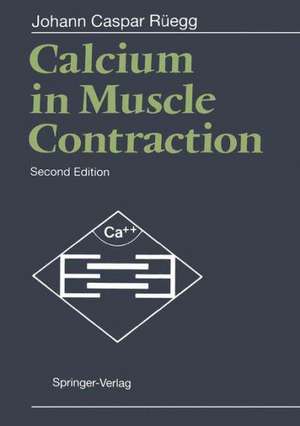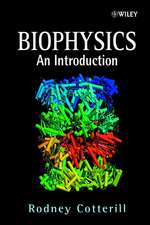Calcium in Muscle Contraction: Cellular and Molecular Physiology
Autor Johann C. Rüeggen Limba Engleză Paperback – 8 dec 2011
Preț: 646.94 lei
Preț vechi: 761.10 lei
-15% Nou
Puncte Express: 970
Preț estimativ în valută:
123.80€ • 129.84$ • 103.05£
123.80€ • 129.84$ • 103.05£
Carte tipărită la comandă
Livrare economică 01-15 aprilie
Preluare comenzi: 021 569.72.76
Specificații
ISBN-13: 9783642775628
ISBN-10: 3642775624
Pagini: 376
Ilustrații: XVIII, 354 p.
Dimensiuni: 170 x 242 x 20 mm
Greutate: 0.6 kg
Ediția:2nd ed. 1992. Softcover reprint of the original 2nd ed. 1992
Editura: Springer Berlin, Heidelberg
Colecția Springer
Locul publicării:Berlin, Heidelberg, Germany
ISBN-10: 3642775624
Pagini: 376
Ilustrații: XVIII, 354 p.
Dimensiuni: 170 x 242 x 20 mm
Greutate: 0.6 kg
Ediția:2nd ed. 1992. Softcover reprint of the original 2nd ed. 1992
Editura: Springer Berlin, Heidelberg
Colecția Springer
Locul publicării:Berlin, Heidelberg, Germany
Public țintă
Professional/practitionerCuprins
1. Muscle Excitation and Contraction.- 1.1 Muscle Excitation.- 1.2 Electromechanical Coupling.- 1.3 The Contractile Process.- 2. The Sarcoplasmic Reticulum: Storage and Release of Calcium.- 2.1 Inward Spread of Excitation in the Transverse System (T-System).- 2.2 Calcium Release from the Sarcoplasmic Reticulum (SR).- 2.3 Calcium Reuptake by the Sarcoplasmic Reticulum.- 3. The Dependence of Muscle Contraction and Relaxation on the Intracellular Concentration of Free Calcium Ions.- 3.1 Crustacean Muscle.- 3.2 Vertebrate Skeletal Muscle.- 4. Calcium Binding and Regulatory Proteins.- 4.1 Structure and Function of Troponin.- 4.2 Alterations of Thin Filaments Trigger Contraction.- 4.3 Ancillary Calcium-Binding Proteins: Calmodulin, Parvalbumin, and Myosin Light Chains.- 5. Diversity of Fast and Slow Striated Muscle.- 5.1 Vertebrate Tonic Muscle Fibres.- 5.2 Comparison of Mammalian Fast- and Slow-Twitch Fibres.- 5.3 Diversity of Crustacean Muscles.- 5.4 Insect Flight Muscle.- 5.5 Obliquely Striated Muscle of Annelids and Nematodes.- 5.6 Generalizations and Conclusions.- 6. Myosin-Linked Regulation of Molluscan Muscle.- 6.1 Calcium Regulation in the Striated Adductor of the Scallop.- 6.2 Catch Muscles.- 6.3 Summary.- 7. The Vertebrate Heart: Modulation of Calcium Control.- 7.1 Calcium-Transport Mechanisms.- 7.2 Calcium Movements as the Link Between Excitation and Contraction.- 7.3 Myoplasmic Free Calcium, a Major Determinant of Contractility.- 7.4 Alteration of Contractility by Changes in Calcium Responsiveness of Myofilaments.- 8. Vertebrate Smooth Muscle.- 8.1 Contractile Mechanism.- 8.2 Calcium Activation of the Contractile Apparatus.- 8.3 Regulation of the Intracellular Calcium Ion Concentration.- 8.4 Modulation of Calcium Activation by Cyclic Nucleotides and G-Proteins.- 9. Principles of Calcium Signalling in Muscle.- 9.1 Senders of Calcium Signals.- 9.2 Transmission of Calcium Signals.- 9.3 Diversity of Calcium-Signal Receivers.- 9.4 Contractile Responsiveness to Calcium.- 9.5 Feedback Signals and Servoloops.- 10. Molecular Level Approaches to Excitation-Contraction Coupling in Heart and Skeletal Muscle.- 10.1 Calcium Channels in T-System SR Coupling and Calcium Release.- 10.2 Control of the Contractile Mechanism by Intracellular Free Calcium.- 10.3 Concluding Remarks and Future Prospects.- References.














